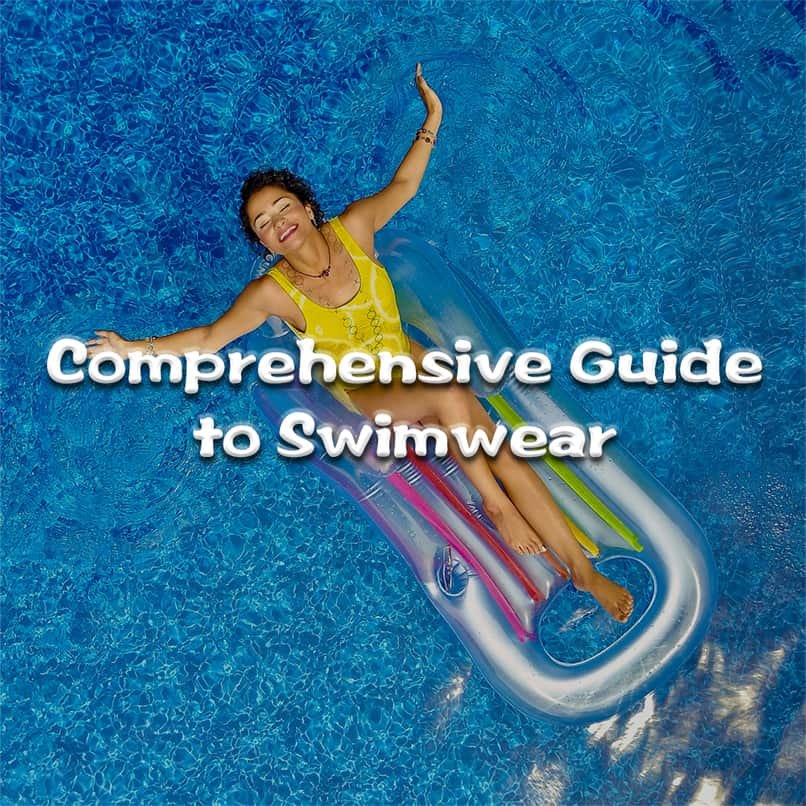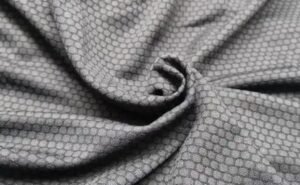
A swimsuit is a piece of clothing designed to be worn while swimming. It is typically made of a quick-drying fabric such as polyester or nylon, and is designed to fit snugly on the body in order to reduce drag while swimming. Swimsuits are usually worn by people participating in water-based activities, such as swimming, surfing, or diving. They come in a wide range of styles, including one-piece suits that cover the torso and legs, and two-piece suits that consist of a top and bottom. Some swimsuits are also designed to provide a certain level of buoyancy in the water, helping the wearer to stay afloat.
Advantages and disadvantages of swimsuit fabric
1. The advantages and disadvantages of nylon swimsuits

The advantages of nylon swimsuits include their strength, durability, resistance to wear and tear, and ability to withstand high temperatures. Nylon swimsuits are also relatively inexpensive and easy to produce. Additionally, nylon is a stretchy fabric that can provide a comfortable fit and allow for a full range of motion.
However, nylon swimsuits also have some disadvantages. Because nylon is not as breathable as some other fabrics, it can be uncomfortable to wear in hot weather or for extended periods of time. Nylon swimsuits can also retain water and become heavy when wet, which can be a disadvantage if you’re doing activities that involve a lot of water. Additionally, nylon is not as biodegradable as some other materials, so it can take a long time to break down in the environment.
2. The advantages and disadvantages of spandex swimsuits

Spandex swimsuits have several advantages and disadvantages. One of the main advantages of spandex swimsuits is their stretchiness and flexibility, which allows them to fit snugly and comfortably against the body. This can make them a good choice for activities like swimming and water sports, where you need a swimsuit that won’t restrict your movements. Spandex swimsuits are also known for their durability and resistance to chlorine, which makes them a good choice for regular use in chlorinated pools.
On the other hand, spandex swimsuits can be less breathable than other types of swimsuits, which can make them feel less comfortable in hot weather. They can also be more expensive than other types of swimsuits, and some people find that they don’t hold their shape as well over time. Additionally, spandex swimsuits can be less resistant to fading and other types of damage from sunlight and saltwater.
If you need a swimsuit that is flexible and durable for activities like swimming and water sports, a spandex swimsuit might be a good choice. However, if you are looking for a swimsuit that is breathable and affordable, you might want to consider other options.
3. The advantages and disadvantages of lycra swimsuits

Lycra is a brand of synthetic fiber that is often used in swimsuits, along with other types of clothing and accessories. The advantages and disadvantages of Lycra swimsuits are similar to those of spandex swimsuits, as both materials are known for their stretchiness and durability. However, there are some key differences between the two materials that you should consider when choosing a swimsuit.
One of the main advantages of Lycra swimsuits is their durability. Lycra is known for its resistance to stretching, fading, and other types of damage, which means that a Lycra swimsuit is likely to last longer and retain its shape better than a swimsuit made from other materials. Additionally, Lycra is known for its ability to retain its color, which can make it a good choice for swimsuits that you want to keep looking vibrant and new.
One of the main disadvantages of Lycra swimsuits is their cost. Because Lycra is a high-quality synthetic fiber, swimsuits made from this material can be more expensive than other types of swimsuits. Additionally, some people find that Lycra swimsuits are not as breathable as other materials, which can make them less comfortable to wear in hot weather.
If you want a durable and long-lasting swimsuit, a Lycra swimsuit might be a good choice. However, if you are looking for a more affordable and breathable swimsuit, you might want to consider other options.
4. The advantages and disadvantages of polyester swimsuits

Polyester is a type of synthetic fiber that is often used in swimsuits, along with other types of clothing and accessories. The advantages and disadvantages of polyester swimsuits depend on your individual needs and preferences, as well as the specific features of the swimsuit you are considering.
One of the main advantages of polyester swimsuits is their affordability. Polyester is a relatively inexpensive material, which means that swimsuits made from this material are often more affordable than other types of swimsuits. Additionally, polyester is a durable material that is resistant to fading, shrinking, and other types of damage, which means that a polyester swimsuit is likely to last longer and retain its shape better than a swimsuit made from other materials.
One of the main disadvantages of polyester swimsuits is that they are not as breathable as other materials. This can make them feel less comfortable to wear in hot weather, and can also cause them to retain moisture and become heavy when they are wet. Additionally, polyester swimsuits are not as stretchy as other materials, which can make them less comfortable to wear and can limit your range of motion in activities like swimming and water sports.
If you are looking for an affordable and durable swimsuit, a polyester swimsuit might be a good choice. However, if you want a swimsuit that is more breathable and flexible, you might want to consider other options.
Some tips for choosing a swimsuit

Choosing a swimsuit can be a daunting task, but with the right approach, it can be a fun and exciting process. Here are a few tips to help you choose the perfect swimsuit:
- Consider your body type: Different swimsuit styles flatter different body types. For example, if you have a curvy figure, you may want to choose a swimsuit with built-in support or a high-waisted bottom to create a balanced silhouette. If you have a straight body type, a swimsuit with ruffles or prints can add curves and create a more feminine shape.
- Determine the right fit: The fit of your swimsuit is just as important as the style. Make sure the swimsuit fits snugly but comfortably on your body. Avoid swimsuits that are too tight or too loose, as they can be uncomfortable and unflattering. You should be able to move freely and comfortably in your swimsuit.
- Consider the neckline and straps: The neckline and straps of your swimsuit can greatly affect its overall appearance and support. If you have a larger bust, you may want to choose a swimsuit with a higher neckline and wider straps for added support. If you have a smaller bust, a lower neckline and thinner straps can create a more balanced silhouette.
- Choose the right color and pattern: The color and pattern of your swimsuit can also affect its overall appearance. Dark colors tend to be more slimming, while light colors can make you look larger. Bold patterns can also draw attention to certain areas of your body, so choose wisely.
- Try on multiple styles: Don’t be afraid to try on multiple styles of swimsuits to find the one that looks and feels best on you. It’s also a good idea to bring a friend or family member with you when shopping for a swimsuit to get a second opinion.
Overall, the key to choosing the perfect swimsuit is to find one that fits your body type, is comfortable, and makes you feel confident and beautiful. Take your time and try on different styles and sizes until you find the swimsuit that’s right for you.







